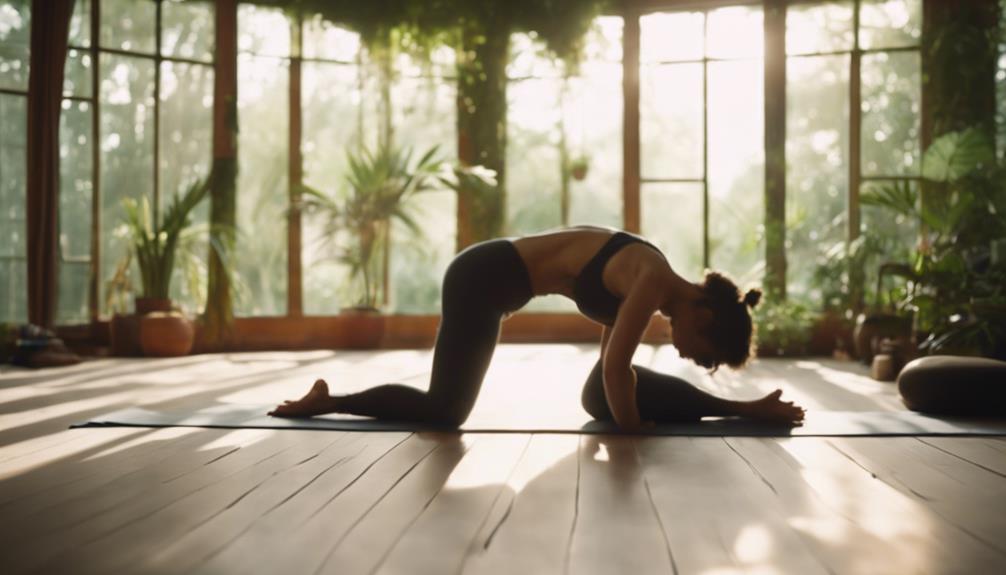Sup Yoga

Stand-Up Paddleboarding (SUP) has taken the world by storm, combining the tranquility of yoga with the adventure of paddling on water. This harmonious blend, known as SUP yoga, offers not just a unique way to practice yoga but also provides numerous physical and mental health benefits. In this article, we will explore the various aspects of SUP yoga, from its origins to its benefits, tips for beginners, and how to find the best classes or locations to practice.
The Origins of SUP Yoga: A Brief History
SUP yoga is a relatively recent phenomenon, gaining popularity in the early 2000s. It originated in Hawaii, where yoga enthusiasts began practicing their poses on paddleboards in the ocean. The idea was to take traditional yoga practices out of the studio and into nature, allowing practitioners to connect with the elements around them. This innovative approach quickly spread across the globe, leading to the development of specialized classes and retreats designed for SUP yoga. The combination of yoga on a paddleboard allows for a unique experience, as the gentle movement of the water enhances balance and deepens the mind-body connection.
The Physical Benefits of Practicing SUP Yoga
Practicing SUP yoga offers a myriad of physical benefits. First and foremost, the unstable surface of the paddleboard challenges your core muscles, leading to improved strength and stability. Balancing on the board engages your abdominal muscles, back, and legs, making it an excellent full-body workout. Moreover, SUP yoga enhances flexibility; as you flow through various poses, the water’s buoyancy assists in deepening stretches. This practice can also improve cardiovascular health, as paddling requires endurance and builds muscle tone, promoting overall fitness.
The Mental Health Benefits of SUP Yoga
Beyond the physical advantages, SUP yoga significantly contributes to mental well-being. The calming effect of water has been well-documented, and practicing yoga on a paddleboard allows individuals to immerse themselves in nature, which can reduce stress and anxiety levels. The rhythmic motion of the water combined with mindful breathing promotes a meditative state, fostering relaxation and mental clarity. Additionally, the act of being outdoors can enhance mood and boost overall happiness, making SUP yoga a holistic practice that nurtures both body and mind.
Related Posts:
Essential Gear for SUP Yoga
To get started with SUP yoga, you’ll need some basic gear. First and foremost, a stable paddleboard is crucial. Look for a board that is wide and has a non-slip surface to ensure stability during your practice. A paddle is also necessary for maneuvering your board. Additionally, wearing a comfortable swimsuit or athletic wear that allows for a full range of motion is essential. Consider a personal flotation device (PFD) for safety, especially if you are practicing in deeper waters. Finally, a yoga mat can provide extra grip and cushioning on the board, enhancing your practice.
Finding the Right Location for SUP Yoga
The beauty of SUP yoga is that it can be practiced in various settings, from tranquil lakes to ocean bays. When choosing a location, consider factors like water conditions, scenery, and accessibility. Calm, flat water is ideal for beginners, while more experienced practitioners may enjoy the challenge of ocean waves. Many yoga studios and outdoor adventure companies offer guided SUP yoga classes, which can be a great way to learn the basics and meet fellow enthusiasts. Research local options or join a SUP yoga community to discover the best spots near you.
Tips for Beginners: How to Get Started with SUP Yoga
If you’re new to SUP yoga, here are some helpful tips to ease your introduction. Start with a basic paddleboarding lesson to familiarize yourself with the board and paddling techniques. Once you’re comfortable on the water, look for beginner SUP yoga classes that can guide you through the poses safely. Always practice in calm waters and wear a PFD for safety. Focus on your breath and take your time transitioning between poses, as stability is key. Lastly, don’t be afraid to fall in; it’s all part of the experience and can be a fun way to cool off!
The Importance of Mindfulness in SUP Yoga
Mindfulness is a central component of both yoga and paddleboarding, and it becomes even more significant in the context of SUP yoga. Being present in the moment enhances your experience, allowing you to fully appreciate the beauty of your surroundings and the sensations in your body. As you practice, focus on your breathing, the gentle rocking of the water, and the sounds of nature. This mindfulness not only enriches your practice but also carries over into your daily life, helping to cultivate a sense of calm and awareness beyond the water.
Conclusion: Embrace the Flow of SUP Yoga
In conclusion, SUP yoga is a unique and enriching practice that merges the physical and mental benefits of yoga with the beauty of nature. Whether you’re a seasoned yogi or a beginner looking for a new adventure, SUP yoga offers something for everyone. By understanding its origins, physical and mental benefits, essential gear, and tips for getting started, you can fully embrace this transformative experience. So grab your paddleboard, find a serene spot on the water, and let the flow of SUP yoga guide you toward enhanced well-being and inner peace.
With the combination of exercise, mindfulness, and the great outdoors, SUP yoga could be the perfect addition to your wellness routine. Explore the waters and discover the joy of practicing yoga in a whole new way!